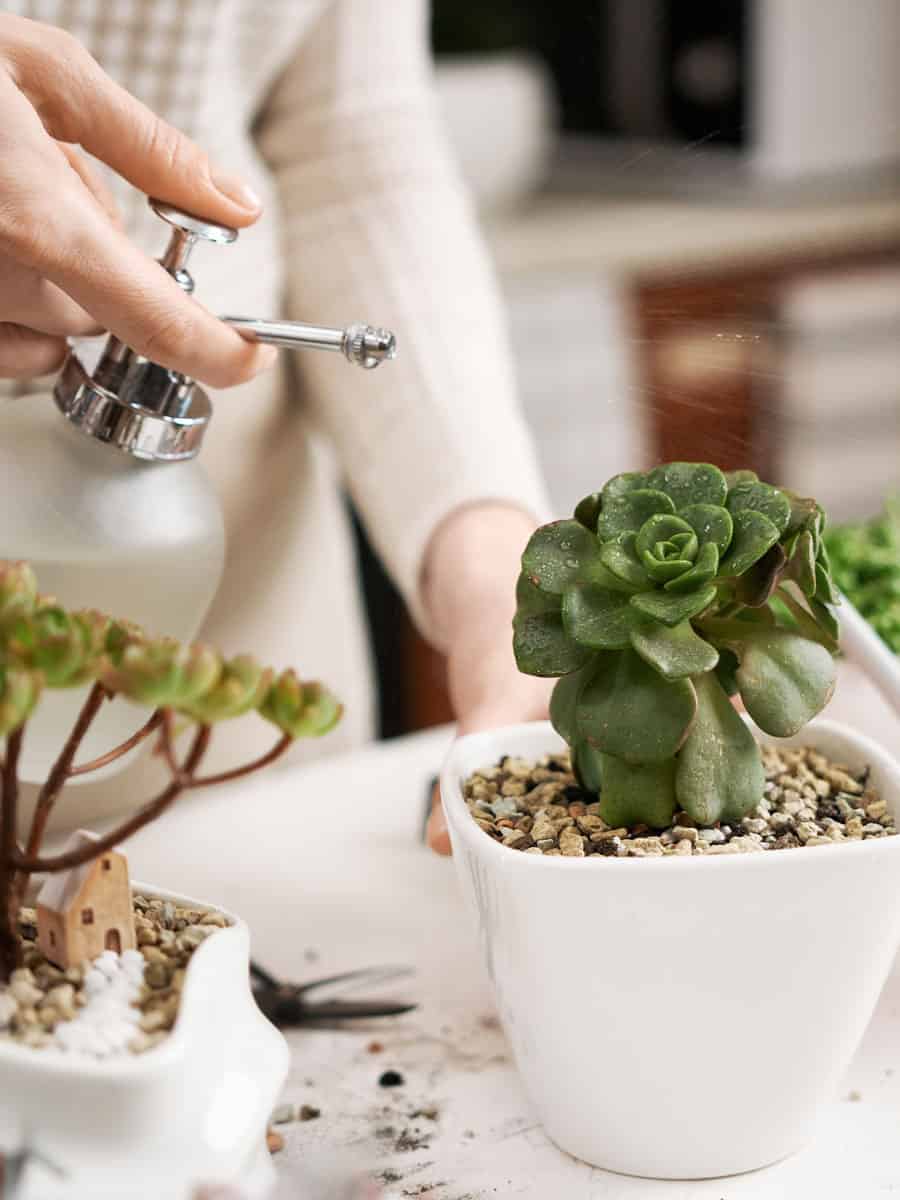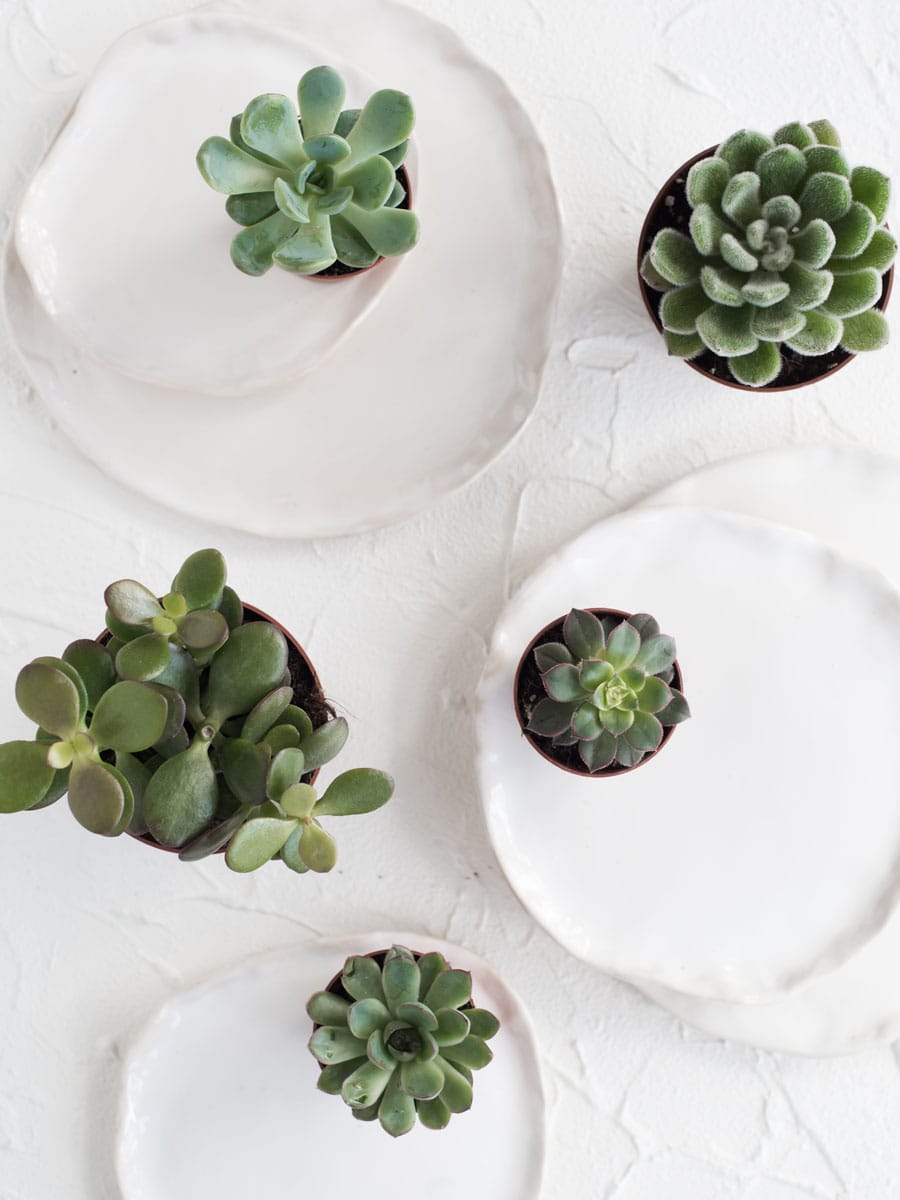Succulents, with their resilience and an array of striking forms, have become favorites in homes around the world.
You might already have these undemanding plants perched in sunny corners of your own home, charming with their ease of care.

However, despite their hardy reputation, succulents are not indestructible. It's all too easy to fall victim to well-intentioned care tactics that may do more harm than good.
Understanding common pitfalls in succulent care could be the difference between a thriving collection and a withering one.
Mistake #1: Not Watering Enough
Succulents are known for not needing much water, but a common mistake is not watering them enough. They still need to drink! The key is to balance it right—not too little, not too much.
Succulents keep water in their leaves, so they start to turn yellow and brown if they don't get enough. They do best with a "soak and dry" approach.
Here's what to do: water the soil until it drains out of the bottom, then don't water again until the soil is totally dry.
Your watering routine should be regular but adaptable. The size of your succulent, the type of soil, and your home's conditions all play a part in how often you water.
It could be once a week or less; just keep an eye on the soil's dryness. And remember, a little sprinkle isn't enough for these plants. They like a good soak, like the heavy rains they'd get in the wild.
Read more: 5 Tips to Avoid Overwatering Your Succulents
Mistake #2: Putting Them Under the Shade a Lot
When succulents are stuck in shady spots, they miss out on the energy they need to grow and, as a result, can become weak or stretched out, chasing the light they crave.
This disappointing situation is called etiolation, where the plant gets leggy, the color fades, and the shape gets all wonky.
For most varieties, bright, indirect light will keep them happy. Find a spot near a sunny window where they can bask in plenty of light, but not direct harsh sun.
Artificial lighting is a great substitute if your home doesn’t get enough natural light. Position these lights about 6-12 inches above your succulents and keep them on for 14-16 hours daily.
If you want to shade your plants, using a shading cloth with a rate between 30% and 50% will hit the sweet spot, letting in the good stuff while filtering out the too much toastiness.
Can't find a sunlit spot? Check out these 11 Beautiful Succulents That Don’t Need Sun
Mistake #3: Improper Soil and Drainage
Succulents thrive in environments replicating their natural habitats, which often means dry, well-drained soil. The improper mix can be a silent killer for your plants.
Fine, dense soil retains moisture for too long, which can lead to root rot and, ultimately, the demise of your plant.
Consider a soil blend specifically for succulents, usually containing a mixture of potting soil, sand, and perlite or pumice.
Drainage holes at the bottom of pots are your succulents' safety net. They allow excess water to escape, ensuring roots aren't sitting in moisture.
A pot without these holes is like a swimming pool with no drains; water has nowhere to go. If you're thinking you can overcome this with less frequent watering, think twice.
And with that, we go right back to the watering schedule. A sunlit, dry room needs more frequent watering than a darker, humid space.
But again, we want to note that this can vary based on conditions and the succulent type. Always check the soil's moisture before watering again!
Read more: 5 Tragic Results of Using the Wrong Soil for Your Succulents
Mistake #4: Wrong Pot Material
You might think any old container will do, but the material of your succulent pot isn’t just about looks—it’s key to your plant's health.
Terra-cotta and ceramic pots are your succulent's best friends. Why? These porous materials allow soil to dry out more quickly than non-porous materials like plastic or glass.
If you accidentally choose a non-breathable pot, your succulents might sit in damp soil too long. Your choice of pot can lead to a dreaded case of root rot or leave your succulent begging for more moisture.
Mistake #5: Not Repotting When Needed
Often, plant parents overlook the signs that a succulent needs a new home. Recognizing when to transfer a succulent to a new pot is crucial to ensure it stays healthy.
Watch for signs like crowded roots poking out of the soil, water draining too quickly, slowed growth during active seasons, and visible salt and mineral deposits on the soil's surface.
If you're not sure, aim to repot succulents at least once a year.
And lastly, season matters. Avoid repotting during dormancy periods. For most succulents, the best time for repotting is at the onset of their growth period.
This is usually spring for winter-dormant succulents and fall for summer-dormant ones.
Read more: Why Repotting Your Succulents Can Be a Risky Move
Mistake #6: Quickly Moving Succulents Between Different Light Levels
Moving your succulents from low indoor light to bright outdoor sunlight without much thought, or the reverse, can be risky. A gradual transition is essential.
Sudden exposure to intense light can cause sunburn on their leaves, leading to permanent damage.
Additionally, succulents accustomed to dim settings may lose their vibrant colors and weaken if moved too quickly to bright light.
Start by exposing them to slightly brighter light for a few hours daily. Watch for signs of distress, like wilting or discoloration.
Gradually increase their exposure each day. Initially, use sheer curtains or shade cloth to soften direct sunlight, protecting your plants during this adjustment phase.
Mistake #7: Mixing Different Types Together
Creating a succulent garden is akin to organizing a potluck; it's important to ensure plant compatibility.
When mixing succulents, consider that they may not all thrive under the same conditions.
Group succulents with similar light needs together; some love full sun, others prefer indirect sun, and some even prefer shade.

Watering habits also vary; desert varieties need less water than those from humid climates. Be mindful of soil preferences, as succulents adapt to different soil types in their natural habitats.
Lastly, consider each plant's growth pattern. Some need space to spread out, while others are fine with less room. Proper spacing will help all your plants flourish.
Mistake #8: Fertilizing Incorrectly
Succulents are like the camels of the plant world; they store nutrients and don't need frequent feeding. But when they do need a nutrient boost, it’s crucial to get it right!
Timing is key when fertilizing succulents; they benefit most from feeding during their growth season, typically from spring to fall. Fertilizing outside this period can overload them with nutrients.
A monthly, light feeding during this active period is sufficient, as over-fertilization can damage their water-conserving structure.
But some succulents, like cacti, may require even less frequent fertilization. Opt for a well-balanced, water-soluble fertilizer at half-strength to avoid overpowering your succulents—less is definitely more!
Learning from Our Succulent Care Mistakes
You've now journeyed through the common pitfalls of succulent care, arming yourself with the know-how to prevent future blunders.

Remember, succulents are resilient but not invincible. Their survival depends on a delicate balance of proper watering, appropriate lighting, careful repotting, and mindful fertilization.
By understanding their unique needs and limits, you can help these hardy plants thrive. Your newfound knowledge is a testament to your commitment to nurturing these fascinating plants!
